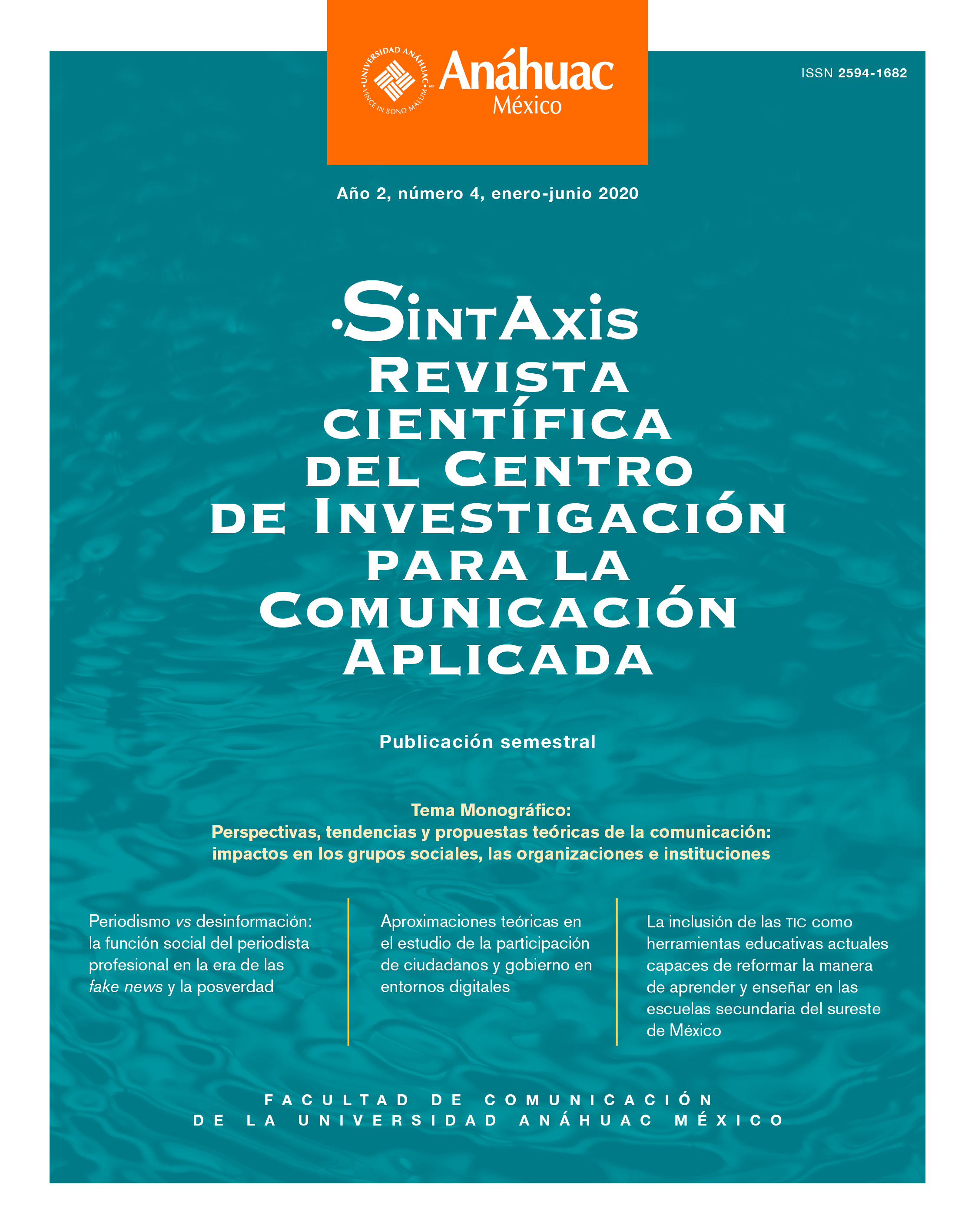Public Communication, Democracy and Consensus: A Model Building Kit at the Municipal Government Level
Main Article Content
Abstract
This article aims at setting the bases, from a complex outlook, for a strategically formulated communication model for the municipal or local government level. It starts off by analyzing the increasingly important role of societal participation via the media and hyper media (social networks); specific political actions on issues such as the right of access to information; and the importance of governmental communication and reputation in democratic systems. The article then identifies strategies and tactics of social and public communication that can collaboratively help to build up credibility and social consensus. We then emphasize the importance of single events, the news, early handling of information, tactical formulation of agendas, and the formulation of public policies in a collaborative, comprehensive way. The article ends by proposing the possibility of constructing a vision of government communication produced by local entities.
Downloads
PLUMX Metrics
Article Details
The author keeps the property rights with no restriction whatsoever and guarantees the magazine the right to be the first publication of the work. The author is free to deposit the published version in any other medium, such as an institutional archive or on his own website.
References
Cansino, C. (2020). Política y pospolítica en las sociedades contemporáneas. México: Instituto Reyes Heroles.
Dader, J.L. (2004). “Comunicopólogos: los sastres del Emperador, sus hilos de oro y las lentes del público”. DOXA Comunicación, Madrid, nº 2, pp. 191-216. 2004
Universidad San Pablo-CEU de Madrid. https://www.academia.edu/3056127/_Comunicopólogos_ los_sastres_del_Emperador_sus_hilos_de_oro_y_las_lentes_del_público_DOXA_Comunicación_ Universidad_San_Pablo CEU_de_Madrid_no_2_pp._191-216._2004
Dayan, D., y Katz, E. (1995). La historia en directo. La retransmisión televisiva de los acontecimientos. Barcelona: Gustavo Gili.
Edelman, M. (1991). La construcción del espectáculo político, Buenos Aires, Ediciones Manantial.
Elizalde, L. (2006). Hacia un modelo de comunicación gubernamental para el consenso. En Elizalde,
L.; Fernández Pedemonte, D., y Riorda, M. (Eds.), La construcción del consenso: gestión de la comunicación gubernamental. Buenos Aires: La Crujía.
Elizalde, L.; Fernández Pedemonte, D., y Riorda, M. (Eds.) (2006). La construcción del consenso: gestión de la comunicación gubernamental. Buenos Aires: La Crujía.
Laswell, H. (1948). The structure and function of communication in society. The communication of ideas. Nueva York: Institute for Religious and Social Studies.
Luhmann, N. (1996). Introducción a la teoría de los sistemas. México: Anthropos / Universidad Iberoamericana.
Llorente, J. A. (2017). La era de la posverdad: realidad vs percepción. Uno, (27), 9.
Maldonado, M. (2016). Democracia, derechos y regla de mayoría: una mirada a partir de la teoría de
Norberto Bobbio. Isonomía, (44), 127–162. https://doi.org/10.5347/44.2016.67Meadow, R. (1980). Politics as communication. Norwood: Ablex.
Monzón, C. (1996). Opinión pública y comunicación política. Madrid: Tecnos.
Ramírez, R. y Arévalo, R. (2017). Comunicación sustentable y responsabilidad social empresarial. México: Tirant lo Blanch / Universidad Anáhuac.
Riorda, M. (2016). Mito de gobierno. En Crespo, I.; D’adamo, O.; García, V., y Mora, A. (Coords.), Diccionario Enciclopédico de Comunicación Política. Madrid: Centro de Estudios Políticos y Constitucionales.
Rose, J. (2000). Making pictures in our heads: Government advertising in Canada. Westport: Praeger.
Sánchez, J. (2006). Propuesta ejecutiva del plan estratégico 2006. Dirección General de ComunicaciónSocial y Relaciones Públicas. Gobierno del Estado de Puebla 2005-2011.
Sánchez, J. (2018). Estrategias de campaña sobre aguas turbulentas. Puebla: Piso 15.
Sánchez, F., y Leyva, O. (2015). Participación política y el ejercicio del poder. En Arango, X. A., y
Hernández, A. A. (Coords.), Ciencia política: perspectiva multidisciplinaria (pp. 67–82). México: Tirant lo Blanch.
Schramm, W. (1954). The process and effects of mass communication. Urbana: University of Illinois Press.
Serrano, M. (2008). La mediación social. Madrid: Akal.
Thompson, J. (2001). Escándalo político: poder y visibilidad en la era de los medios de comunicación. Madrid: Paidós.

